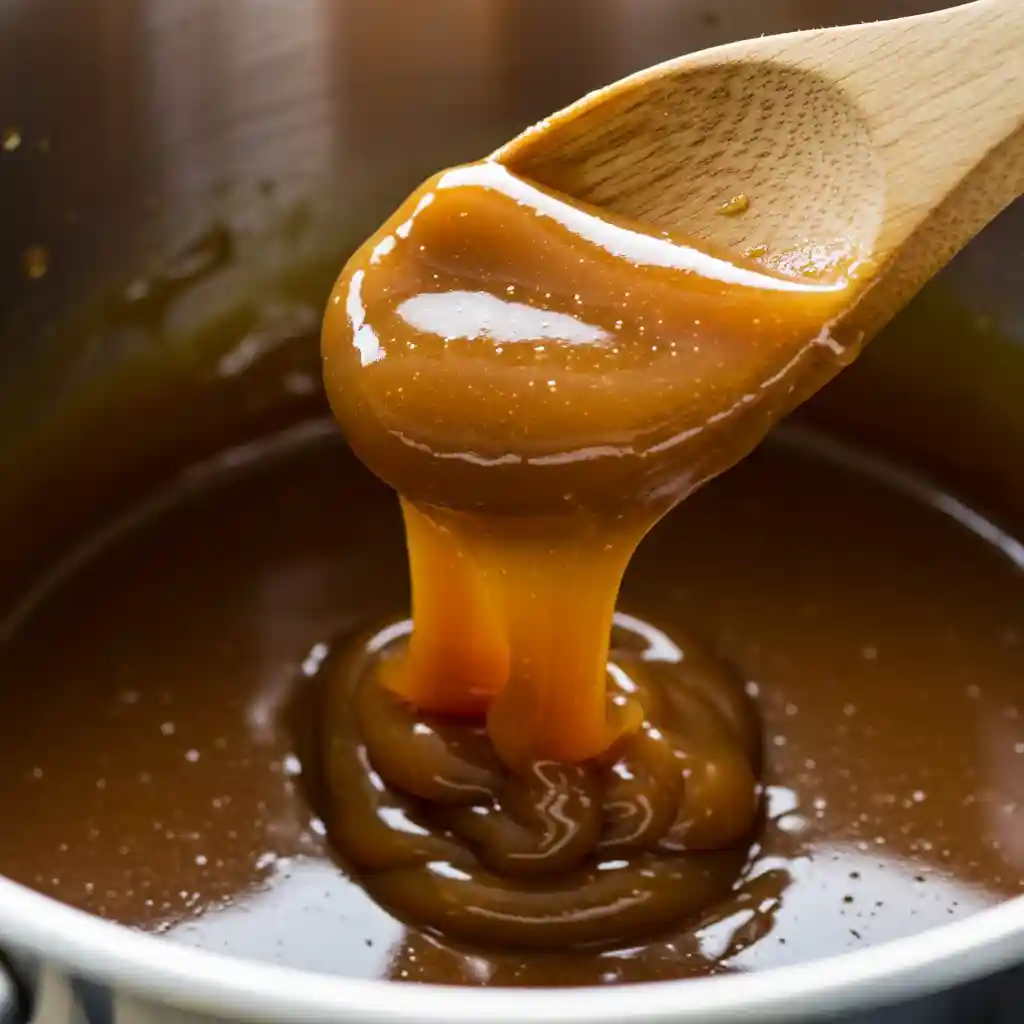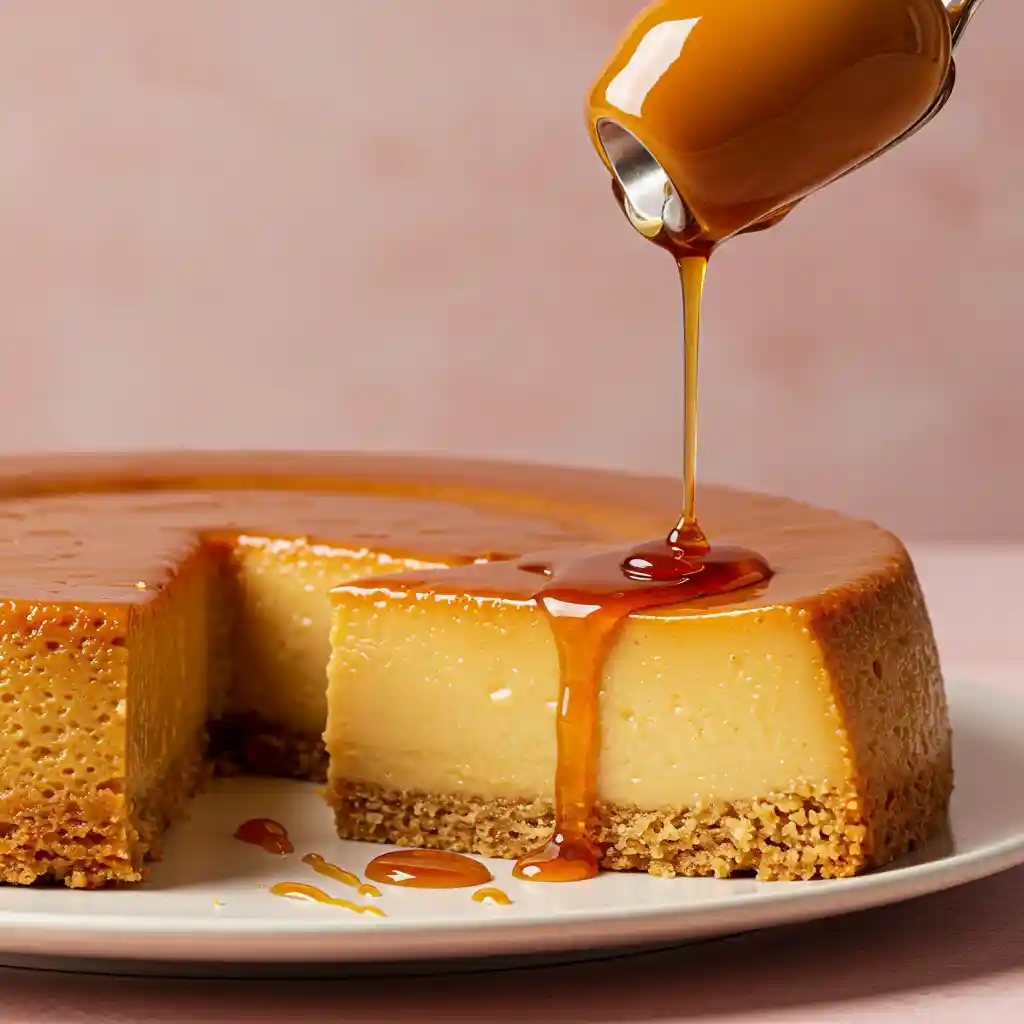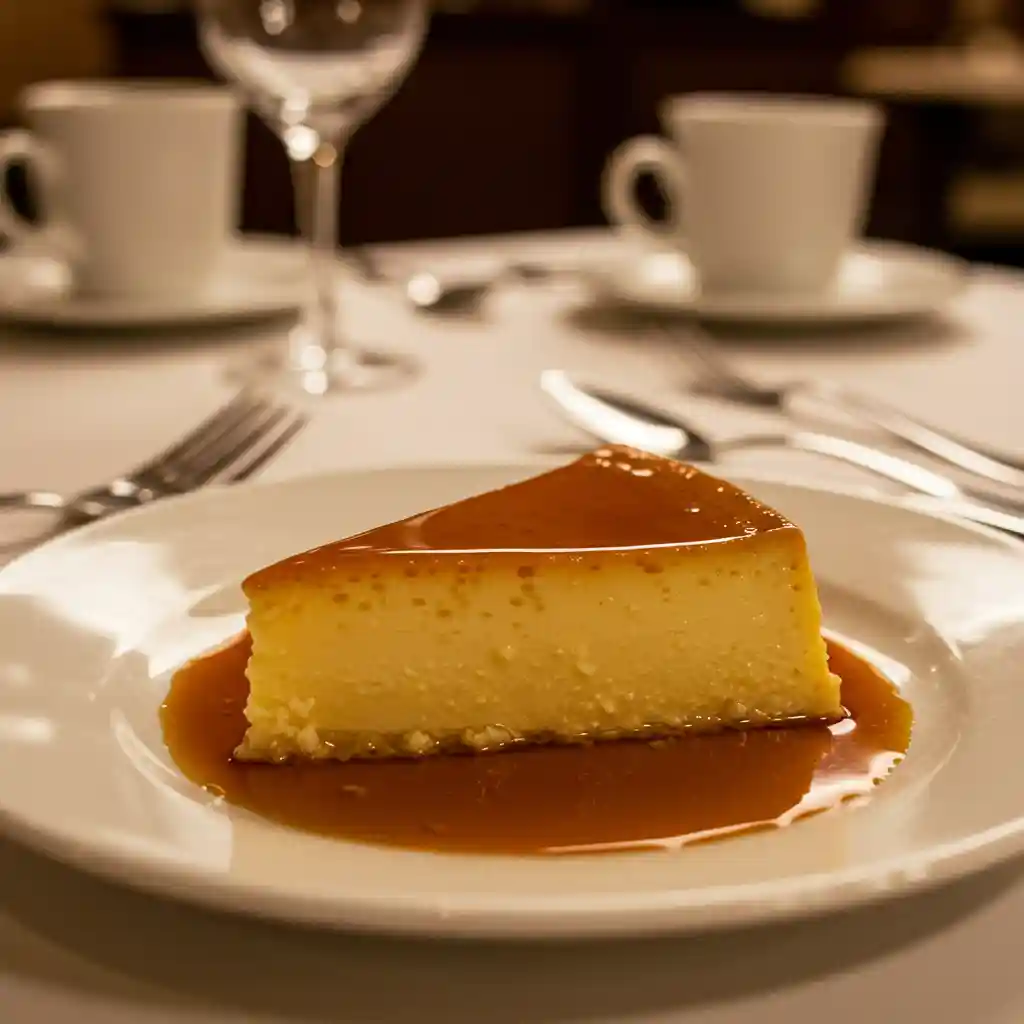The Venezuelan quesillo is a delightful dessert that combines the creamy richness of flan with the unique flavor of cheese. Often enjoyed as a sweet treat after meals, this dish is a staple in Venezuelan cuisine. With its smooth texture and sweet caramel topping, quesillo is a beloved dessert that can easily be made at home. In this article, we will explore the intricacies of this delicious recipe, including its key ingredients, preparation steps, and tips for achieving the perfect result.
Table of Contents
What is Venezuelan Quesillo?
Understanding the Dish: Quesillo vs. Flan
Venezuelan quesillo is often considered a variation of traditional flan, although it has its unique characteristics that set it apart. While both dishes share a creamy texture and use similar ingredients like eggs and milk, quesillo typically incorporates cheese, giving it a richer flavor profile. This Venezuelan dessert is also known for its delightful caramel topping, which is created by melting sugar until it turns golden brown. Unlike its Mexican counterpart, quesillo tends to be denser and can have a more pronounced taste of cheese. Understanding these differences helps to appreciate the nuances of this delicious dish.
In essence, quesillo can be seen as a fusion of flan and cheese, creating a harmonious blend that showcases the best of both worlds. Incorporating cheese deepens the flavor and gives the dessert a richer, creamier texture. texture that melts in your mouth. Furthermore, the caramel layer on top adds a perfect sweetness that complements the dish’s savory undertones, making it a favorite among dessert lovers, especially when paired with Oaxacan cheese. Thus, recognizing the distinction between quesillo and traditional flan is crucial for anyone looking to master this delightful Venezuelan dessert, particularly when considering the use of string cheese.
Key Ingredients for Authentic Venezuelan Quesillo
To create an authentic Venezuelan quesillo, you will need several key ingredients that contribute to its unique flavor and texture. The primary components include whole milk, condensed milk, eggs, and cheese, often using queso oaxaca or a similar type of cheese. This mixture gives the dessert its creamy consistency and rich taste. Additionally, vanilla extract infuses the quesillo with a delightful aroma, enhancing the overall flavor profile. Lastly, sugar is essential for making the caramel topping that crowns this delicious dessert, providing a sweet contrast to the cheese.
Incorporating quality ingredients is vital for achieving the best results. Whole milk adds creaminess, while condensed milk introduces a luscious sweetness that is hard to resist. The choice of cheese plays an important role as well; using authentic Venezuelan cheese or a soft, melty variety like mozzarella enhances the dish’s texture. Furthermore, vanilla extract elevates the flavor, ensuring that every bite is both sweet and savory. Ultimately, selecting the right combination of ingredients is key to crafting a truly memorable quesillo that reflects the essence of Venezuelan cuisine.

How to Make Venezuelan Flan?
Step-by-Step Recipe for Venezuelan Flan
Making Venezuelan quesillo from scratch involves a few straightforward steps that yield delicious results. Begin by preheating your oven and preparing a flan mold by coating it with caramelized sugar to create the base layer. Whisk together the eggs, whole milk, condensed milk, and vanilla extract in a mixing bowl until the mixture is smooth and well-blended. Carefully pour it into the caramel-coated mold, spreading it out evenly. Then, set the mold inside a larger pan filled with hot water to create a water bath, which ensures gentle and even baking. Bake the quesillo until it is set, which typically takes about an hour.
Once the baking is complete, allow the quesillo to cool before refrigerating it for a Let it chill in the refrigerator for a few hours so the flavors can fully develop. Once set, gently turn the mold upside down onto a serving plate, letting the caramel drizzle smoothly over the dessert. over the quesillo. This step is crucial, as it not only enhances the presentation but also adds a delightful sweetness, especially if you use condensed milk. Finally, slice and serve your homemade Venezuelan quesillo as a creamy dessert that is sure to impress family and friends. This step-by-step guide ensures that anyone can master the art of making this delicious Venezuelan dessert.
Tips for Achieving the Perfect Caramel
Creating the perfect caramel for your Venezuelan quesillo is essential, as it serves as the crown for this delectable dessert. To start, use a heavy-bottomed saucepan to heat sugar over medium heat, stirring continuously to prevent burning. As the sugar begins to melt, be patient and avoid the temptation to increase the heat; a slow and steady approach will yield a beautifully golden caramel. Once the sugar has completely melted and turned a rich amber color, quickly pour it Pour it into the flan mold and tilt gently to spread the caramel evenly across the bottom before it sets.
Timing is crucial when making caramel, as it can quickly go from perfectly golden to burnt in seconds. To prevent this, keep a close eye on the mixture and remove it from the heat once it reaches your desired color. Additionally, if you’re making a larger batch, consider using a thermometer to monitor the temperature, as this can help ensure consistent results. Finally, remember to work quickly, as caramel hardens rapidly as it cools. Following these tips will help you achieve the perfect caramel topping that enhances the flavor and visual appeal of your Venezuelan quesillo.
Common Mistakes to Avoid When Baking Flan
Baking Venezuelan quesillo requires attention to detail, and avoiding common mistakes can help ensure your dessert turns out perfectly. One frequent error is not preparing the caramel properly, leading to a burnt flavor or a sticky mess. To prevent this, focus on controlling the heat and stirring the sugar consistently during the melting process. Additionally, another mistake is overbaking the quesillo, which can cause it to become rubbery or dry. To prevent this, check for doneness by gently shaking the mold; if the center jiggles If the center wobbles just a bit, it’s time to remove it from the oveneady to come out of the oven.
Furthermore, not allowing the quesillo to cool properly before refrigerating can result in an uneven texture. After baking, let it rest at room temperature for at least 30 minutes before placing it in the fridge. This step helps the flavors mature and ensures the quesillo firms up correctly. Lastly, be careful when inverting the mold; using a warm plate can help release the caramel smoothly. By being mindful of these common pitfalls, you can create a Venezuelan quesillo that not only looks beautiful but also tastes heavenly.

What Makes Venezuelan Quesillo Unique?
Texture and Flavor: What to Expect
Venezuelan quesillo stands out due to its unique texture and flavor profile, which differentiate it from other dessert options. The combination of eggs, whole milk, and cheese creates a creamy, smooth consistency that melts in your mouth. This delightful texture is complemented by the sweet caramel layer on top, which adds a slight crunch when you first dig in. The cheese’s richness elevates the overall taste, offering a savory balance to the caramel’s sweetness and the dessert’s creamy foundation. This perfect balance makes quesillo a truly exceptional dessert.
In terms of flavor, Venezuelan quesillo offers a deliciously sweet and savory experience. The use of vanilla extract adds warmth and depth, while the cheese introduces a subtle umami note that elevates the dish. Each bite delivers a harmonious blend of flavors that dance on the palate, making it a favorite among dessert enthusiasts. Moreover, the versatility of quesillo allows for various adaptations, enabling cooks to experiment with different cheeses or flavorings to suit their preferences. This adaptability further contributes to its uniqueness, as each version can offer a distinct yet equally delicious experience.
Comparing Venezuelan Quesillo to Other Variants
When comparing Venezuelan quesillo to other flan variants, such as the Mexican flan, several distinct differences become apparent. While both desserts share a base of eggs and milk, the addition of cheese in quesillo significantly alters its flavor and texture. Mexican flan tends to be lighter and airier, whereas quesillo offers a denser, creamier consistency, largely due to the incorporation of cheese like queso oaxaca. Moreover, the caramel layer in Venezuelan quesillo tends to be more robust and luscious, intensifying the overall flavor experience. sweetness and providing a more indulgent dessert experience.
Another difference lies in the preparation methods, with Venezuelan quesillo often utilizing a water bath to ensure even baking. This technique helps maintain moisture and prevents the dessert from becoming dry, which is particularly important for achieving that signature creamy texture. Furthermore, variations of quesillo can be found in different Latin American countries, each with its unique twist on the classic recipe. For instance, Nicaraguan quesillo includes a more pronounced emphasis on cheese and cream, particularly string cheese, creating a distinctly different flavor profile. Such comparisons highlight the diversity of flan variants across cultures, showcasing the rich culinary traditions of Latin America.
What Equipment Do You Need for Baking Quesillo?
Must-Have Baking Tools and Accessories
To successfully bake Venezuelan quesillo, having the right equipment is essential. First and foremost, a high-quality flan mold is crucial, as it allows for even cooking and easy release of the dessert once baked. Opt for a mold made of glass or metal to ensure heat distribution is consistent throughout the baking process. Additionally, a heavy-bottomed saucepan is necessary for making the caramel, as it helps prevent scorching and allows for better control over the melting sugar.
In addition, using a mixing bowl along with a whisk or an electric mixer is essential for thoroughly blending the ingredients. smoothly, ensuring a homogenous mixture that results in a creamy texture, especially when using dairy products. If you plan to use a water bath, a larger baking dish is required to hold the flan mold, as it will be filled with hot water during baking. Lastly, a good pair of oven mitts will protect your hands as you move the transferring hot cookware to and from the oven Having these essential baking tools will enhance your experience and improve the quality of your Venezuelan quesillo.
Choosing the Right Flan Mold
Choosing the right flan mold plays a key role in creating an ideal Venezuelan quesillo. The size of the mold matters; a standard 9-inch round mold is ideal for typical recipes, allowing ample space for the mixture to expand while baking, especially when using dairy ingredients. Selecting a deeper mold can better support the quesillo’s creamy consistency, ensuring it sets properly. When choosing a material, glass or metal molds are recommended, as they promote even heat Even heat distribution is crucial for uniform baking outcomes.
It’s also helpful to use a mold with a non-stick surface, as it simplifies the release process after baking. of inverting the quesillo much smoother. If your mold does not have a non-stick coating, be sure to coat it generously with caramel to prevent sticking. Additionally, some bakers prefer using individual ramekins for serving portions, which can add an elegant touch to your presentation. Ultimately, selecting the right flan mold not only affects the cooking process but also enhances the visual appeal of your finished Venezuelan quesillo, especially when made from raw ingredients.
Can You Customize Your Venezuelan Quesillo Recipe?
Incorporating Different Flavors and Ingredients
One of the enjoyable parts of making Venezuelan quesillo is how easily you can tailor it to your preferences. the recipe according to your taste preferences. For instance, you can experiment with different flavors by adding ingredients such as cocoa powder for a chocolatey twist or citrus zest for a refreshing hint. Additionally, incorporating spices like cinnamon or nutmeg can elevate the flavor profile, creating a unique variation that reflects your personal taste, especially when paired with Oaxacan cheese. These modifications allow for endless possibilities to suit any occasion.
Another way to customize your quesillo is by using flavored extracts, such as almond or coconut, in place of traditional vanilla. This brings a fresh twist to the dessert and complements the overall flavor perfectly. the creamy texture of the dessert. Furthermore, consider adding fresh fruits or nuts as a topping once the quesillo is chilled and inverted. These additions not only enhance the visual appeal but also introduce new flavors and textures, making each serving of quesillo a delightful experience. In the end, personalizing your Venezuelan quesillo lets you craft a one-of-a-kind dessert that delights your taste buds with each bite.
Using Different Types of Cheese in Quesillo
While traditional Venezuelan quesillo typically features queso oaxaca, there is room for creativity when it when it comes to selecting the type of cheese for the recipe. For those who prefer a milder flavor, mozzarella cheese can be a great alternative, providing a comparable smooth texture while keeping the overall flavor balanced. Alternatively, using a sharper cheese can add an interesting contrast to the sweetness of the caramel, creating a more complex flavor profile. This flexibility allows bakers to experiment with various cheese options to find their preferred combination.
In addition to mozzarella, other Mexican cheeses such as cotija or even a blend of cheeses can be used, depending on availability and personal preference. Each cheese brings its unique qualities, affecting both the flavor and texture of the quesillo. For instance, adding a bit of cream cheese can enhance the creaminess, making it even more indulgent. Ultimately, the choice of cheese can significantly impact the final result, and experimenting with different varieties can lead to delightful new takes on the classic Venezuelan quesillo.

How to Serve and Store Venezuelan Quesillo?
Best Ways to Serve Quesillo as a Dessert
Venezuelan quesillo is as fun as preparing it. After inverting it onto a serving plate, let the caramel gently drip down the sides. It’s beautifully arranged on the sides for an attractive presentation. This dessert can be enjoyed on its own, but it pairs beautifully with whipped cream, fresh fruit, or a scoop of vanilla ice cream, adding extra layers of flavor and texture. Additionally, a sprig of mint can add a touch of elegance and make it a great centerpiece at any gathering, especially when serving Oaxacan cheese.
When serving, consider the occasion and your guests’ preferences. For formal occasions, cut the quesillo into elegant pieces and arrange them on individual plates, highlighting the caramel layer. For informal gatherings, serving it straight from the mold is a fun and interactive way for guests to choose their favorites, especially when using delicious ingredients like Oaxacan cheese. No matter the approach taken, presenting it in a creative way enhances the overall dining experience, ensuring that this delicious dessert leaves a lasting impression on all who enjoy it.
Storage Tips: Keeping Your Quesillo Fresh
To keep Venezuelan quesillo fresh, proper storage is crucial, especially if you plan to use it with Oaxaca cheese. After preparing and cooling your quesillo, wrap it tightly in plastic or place it in an airtight container to prevent it from absorbing any odors from the refrigerator. It’s best to store it in the refrigerator, where it can last for up to five days. If you have any leftovers, be sure to seal them tightly to preserve their texture and creamy flavor.
When you’re ready to enjoy it, remove it from the refrigerator and let it stand at room temperature for a few minutes before serving, which enhances its delicious flavor. This helps restore some of its creaminess and improves the overall flavor experience. If desired, you can also reheat it slightly in the microwave for a few seconds, but be careful not to overheat it, as this can alter its texture. By following these storage tips, you can ensure it remains a delicious treat for days to come.
FAQs
1. What is Venezuelan quesillo?
Venezuelan quesillo is a rich, creamy dessert made with eggs, milk, cheese, and caramel, similar to flan but denser and more flavorful.
2. How is it different from regular flan?
Quesillo includes cheese, which gives it a richer, denser texture compared to the lighter, airier Mexican flan.
3. Can I use other cheeses for quesillo?
Yes! You can substitute queso oaxaca with mozzarella, cream cheese, or cotija for different flavors and textures.
4. How do I make the perfect caramel?
Melt sugar slowly over medium heat, stirring constantly until it turns golden amber, then pour into your mold before it hardens.
5. How long should I bake it?
Bake the quesillo for approximately 60 minutes at 350°F (175°C). To check for doneness, gently shake the mold. If the center of the dessert slightly jiggles but is mostly set, it’s ready to come out of the oven.
6. How do I store quesillo?
Refrigerate it for up to 5 days. Let it sit at room temperature before serving for the best texture.

Venezuelan Quesillo Recipe
Method
- Preheat your oven to 350°F (175°C)
- In a heavy-bottomed saucepan, melt the sugar over medium heat, stirring constantly until it turns into a golden amber caramel. Pour the caramel into a flan mold, tilting to coat the bottom evenly
- In a mixing bowl, whisk together the evaporated milk, condensed milk, eggs, vanilla extract, and whole milk until smooth.
- Stir in the shredded cheese.
- Pour the mixture into the caramel-coated mold
- Place the mold in a larger baking pan and add hot water to the pan, creating a water bath that comes halfway up the sides of the mold
- Bake for 1 hour, or until the quesillo is set but still slightly jiggly in the center
- Remove from the oven and let cool completely
- Refrigerate for at least 4 hours, or preferably overnight
- To serve, run a knife around the edge of the mold and invert onto a serving plate. Let the caramel drizzle over the quesillo
- Slice and serve cold
Notes
- Caramel Tip: When making the caramel, be sure to melt the sugar slowly over medium heat, stirring constantly to avoid burning. Once it reaches a golden amber color, pour it quickly into the mold before it hardens.
- Cheese Substitution: While traditional Venezuelan quesillo uses queso oaxaca, you can substitute it with other soft cheeses like mozzarella or even cream cheese for a slightly different flavor and texture.
- Customization: To personalize the flavor, you can add a dash of cinnamon or a touch of orange zest to the custard mixture. For a chocolate twist, consider adding some cocoa powder.
- Storage: This dessert can be stored in the refrigerator for up to 5 days. It’s best served cold after allowing it to come to room temperature for a few minutes to regain its creamy texture.
- Serving Suggestions: Serve it with a dollop of whipped cream or a few fresh berries to add a refreshing contrast to the rich, sweet flavors.
